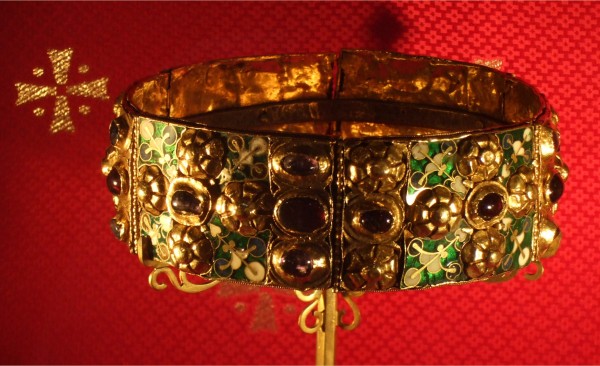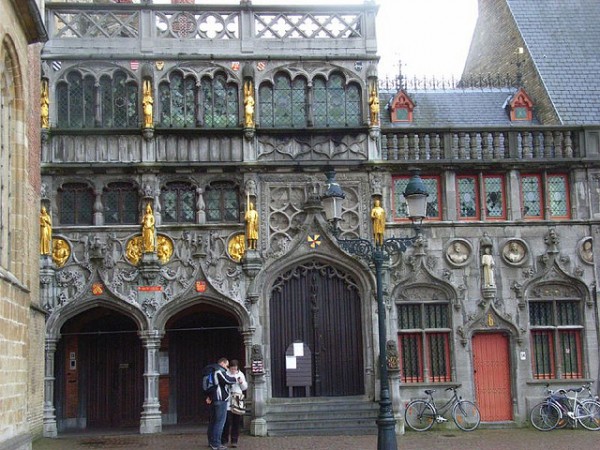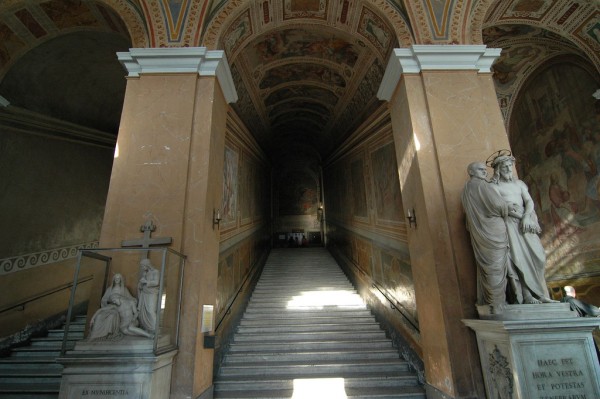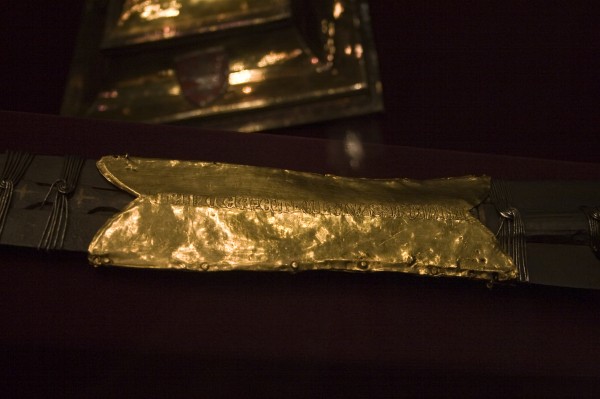Recently, i have been working on holy chalice so i decided to look out for the relics associated with Jesus. A number of such relics have been claimed and displayed throughout the history of Christianity. Some people believe in the authenticity of some relics; others doubt the authenticity of various items. 10 most famous of these are:
10. Iron Crown of Lombardy

Image Source
The Iron Crown of Lombardy is both a reliquary and one of the most ancient royal insignia of Europe. The crown became one of the symbols of the Kingdom of Lombards and later of the medieval Kingdom of Italy. It is kept in the Cathedral of Monza, in the suburbs of Milan. The Iron Crown is so called from a narrow band of iron about one centimeter (three-eighths of an inch) within it, said to be beaten out of one of the nails used at the crucifixion. The outer circlet of the crown is of six segments of beaten gold partly enameled, joined together by hinges and set with twenty-two gemstones that stand out in relief, in the form of crosses and flowers. Its small size and hinged construction have suggested to some that it was originally a large armlet or perhaps a votive crown; for others, the small size of the present crown was caused by a readjustment after the loss of two segments, as described in historical documents.
9. Veil of Veronica

Image Source
The Veil of Veronica, which according to legend was used to wipe the sweat from Jesus’ brow as he carried the cross is also said to bear the likeness of the Face of Christ. Today, several images claim to be the Veil of Veronica. There is an image kept in Saint Peter’s Basilica in Rome which purports to be the same Veronica as was revered in the Middle Ages. Very few inspections are recorded in modern times and there are no detailed photographs. The most detailed recorded inspection of the 20th century occurred in 1907 when Jesuit art historian Joseph Wilpert was allowed to remove two plates of glass to inspect the image.
8. Blood of Christ

Image Source
The Basilica of the Holy Blood is a Roman Catholicminor basilica in Bruges, Belgium. Originally built in the 12th century as the chapel of the residence of the Count of Flanders, the church houses a venerated relic of the Holy Blood allegedly collected by Joseph of Arimathea and brought from the Holy Land by Thierry of Alsace, Count of Flanders. Built between 1134 and 1157, it was promoted to minor basilica in 1923. The basilica is best known as the repository of a venerated phial said to contain a cloth with blood of Jesus Christ, brought to the city by Thierry of Alsace after the 12th century Second Crusade. Although the Bible never mentions Christ’s blood being preserved, one of the apocryphal gospels asserts that Joseph of Arimathea preserved the Precious Blood. The daily making present of the Blood of Christ during the Mass was central in the religious life of the Middle Age in Europe. If genuine, a relic of the Blood of Jesus would be of utmost significance, a uniquely important witness to Jesus’ Passion and a perpetual reminder of the historical character of the Christian Gospel.
7. Scala Sancta

Image Source
The Scala Sancta (English: Holy Stairs) are, according to the Christian tradition, the steps that led up to the praetorium of Pontius Pilate in Jerusalem, which Jesus Christ stood on during his Passion on his way to trial. The stairs were, reputedly, brought to Rome by St. Helena in the 4th Century. For centuries, the Scala Santa has attracted Christian pilgrims who wished to honor the Passion of Jesus. It consists of twenty-eight white marble steps, now encased by wooden steps, located in a building which incorporates part of the old Lateran Palace, located opposite the Basilica of Saint John Lateran. They are located next to a church which was built on ground brought from Mount Calvary. The stairs lead to the Sancta Sanctorum (English: Holy of Holies), the personal chapel of the early Popes in the Lateran palace, known as the chapel of St. Lawrence.
6. Holy Lance

Image Source
The Holy Lance (also known as the Spear of Destiny, Holy Spear, Lance of Longinus, Spear of Longinus or Spear of Christ) is the name given to the lance that pierced Jesus’s side as he hung on the cross in John’s account of the Crucifixion. ” … but one of the soldiers pierced his side with a lance, and immediately there came out blood and water”. —John 19:34. There have been three, or four, major relics that are claimed to be the Holy Lance, or parts of it.